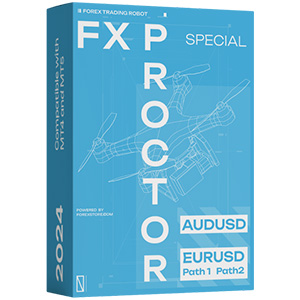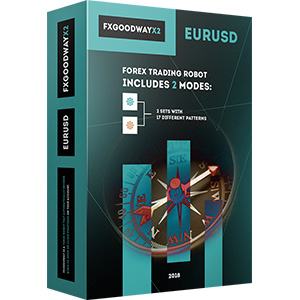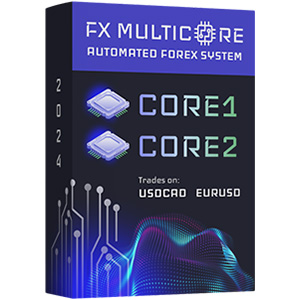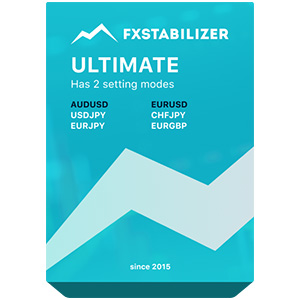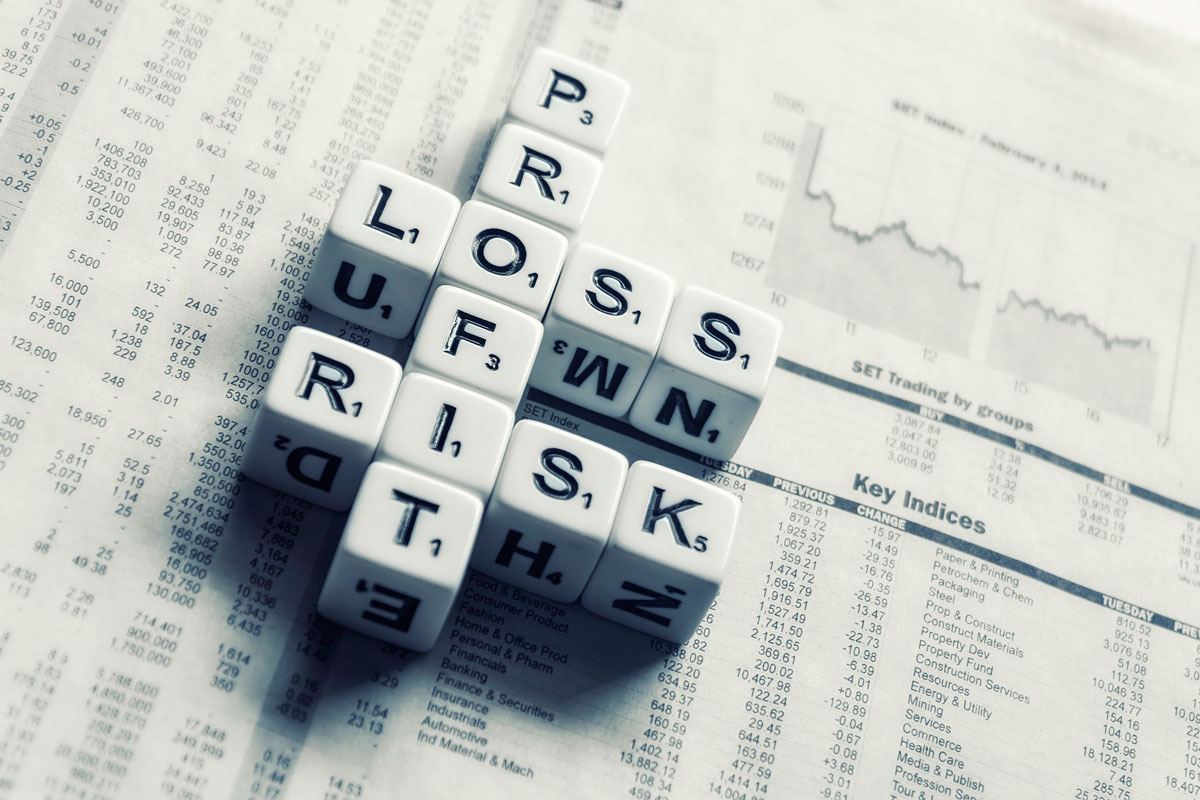
Forex money management is one of the key factors of success in Forex trading. It doesn't matter if you trade manually or if you use Forex robots for automated Forex trading, you still need to know how to manage the risks and save your money. That is what this article about. Keep reading to learn more!
Intro
For your Forex trading to be not only profitable but stably profitable, developing a successful strategy is not enough. Trading on the exchange or currency quotes always carries a share of risk and uncertainty, and it is simply impossible to calculate all the options in advance. Therefore, even experienced traders often suffer losses but their success is in the fact that the income from profitable transactions covers expenses, and as a result, they always remain "in the black".
How to do so to become one of these successful traders and not to waste your nerves worrying about losses? The money-management technique, which experts recommend to use from the very first steps on Forex, will help us to get this result. In this article, we will talk about the basic techniques and rules of money management, their advantages, and their features.
What is Money Management?
We have already said many times that Forex trading is work, and we should treat this activity that way. Beginners who open a deposit, often find themselves overwhelmed by excitement and greed, they do not learn techniques and trading strategies, hoping for the notorious instincts and luck. The result of the inept and reckless trading of such “traders” is obvious – they completely lose the deposit with several unsuccessful transactions and then leave Forex. Moreover, they write angry articles and revealing messages, trying to blame the broker or even the entire currency market for their failure. At the same time, there are millions of people earning good money on Forex, and not only occasionally, as a result of a couple of successful transactions, but regularly. Many of them made currency trading their main job. What is the difference between the first and second? Of course, it is the approach and attitude to trade itself. Successful work on Forex includes three important aspects:
- The right psychological attitude;
- Successful strategy;
- Money management.
Only a combination of all three factors gives a stable positive result, which most traders strive for. If we have repeatedly spoken about the first two sides, the Money-management has not yet been mentioned. So what is it?
Money management – is the collection of special techniques for the distribution of capital and its management in trading. Note that the most successful of them have been developed and tested by thousands of traders on the Forex, so you don't have to invent anything, just use well-known information.
Money management techniques are simple and understandable to everyone, the main problem is not to succumb to greed and desires, but to systematically carry out the intended program.
The benefits of money management in trading
One cannot do trades without losing some of them on Forex. It is impossible even for the most experienced and successful Forex trader to predict exactly which direction the currency will move under the influence of certain events. Another thing is the correct planning of income and expenses, the correct choice of lot size, and fixing losses at an acceptable level so that it will lead to the fact that income from profitable transactions will consistently exceed losses, which means that your account will grow steadily.
Example. Trader concluded five deals a day, fore were profitable, and one was unprofitable. At the same time, the profit of the successful traders totaled $ 25, and the loss of $ 30. At the end of the day, the Trader's account decreased by $ 5.
The Trader concluded the same amount of trades the next day, 2 profitable and 3 unprofitable transactions, but he used money management techniques and adhered to clear planning. His income was $ 20 from 22 transactions, and the loss was $ 15. This means that with a generally less successful day, he was able to increase his account by $ 5.
How to manage your Forex account? All money management, in fact, is four steps:
- Save capital, which means not to be greedy, overstating lots, mindlessly using leverage, and not fixing profits and losses at an acceptable level;
- Make a profit. To develop a competent trading strategy and adhere to it without spraying funds on dubious transactions;
- Increase in profits. This stage logically follows from the two previous ones. If you care about the safety of capital and make a profit, then the deposit on the account will grow, giving you more opportunities for trading;
- There is no need for an explanation here. If you have made a profit, withdrawn it from your account, and no longer trade, then there is no need to talk about success on Forex.
If you skip at least one stage, no successful trading strategy can save you from “draining” your deposit or making too little profit. That is why money management is so important for trading.
Risks and Money management
Although it is often mentioned that money management reduces risks, many traders don’t fully understand this phrase. Rather, the point is that with the help of money management you can independently determine what risk of losses is acceptable for your trading strategy.
The risk per trade is calculated as a percentage of the deposit. So 1% of the desired risk means that in case of losing no more than 1% of the amount of the current account. For example, a deposit is $ 100, you make a deal for $ 5. So, you need to set a stop loss (the level at which the deal will be closed) at $ 4 so that the loss does not exceed 1% of the deposit ($ 1).
According to the risk principle, it is customary to divide Money management into three categories:
- Conservative, in which 1-2% of the risk is laid. This approach allows you to save capital, but the profit will not be too high – the fact is that even minor currency fluctuations can lead to the closure of a potentially profitable transaction;
- Moderate (3-5% risk per trade). This approach is considered optimal, so the risks of losses are small, and the likelihood of profit is increasing;
- Aggressive (5-20% per transaction). This approach is used by traders who seek to make big profits in a short time. Such a strategy is only good if you are absolutely confident in your actions and at the same time use little leverage.
Some traders don't see any reason to set a stop-loss on transactions, confident in their success. Unfortunately, in this case, you can be sure of only one thing. You can be sure only of a quick drain of the deposit literally after several transactions. The market knows many cases when a currency collapsed in a matter of hours, resetting the accounts of even large traders and brokers who didn’t bother to fix an acceptable level of risk.
The main rules of money management
In fact, all Forex money management is a set of dozens of simple rules that everyone who strives to build up their capital must follow. Let’s list them:
- Measure the amount of the deposit with your needs. Brokers offer to open an account from 5-10 dollars, but you should not expect to receive hundreds of dollars for a deal with such an account. If you are just studying and are not ready to risk big funds, the maximum deposit amount for you is $ 50-100 (but even with very successful trading, the income will be limited to tens of dollars, no more). If you strive to earn money and are confident in your abilities, invest heavily.
- Trade with your money. Leverage is evil, especially for a beginner with a small deposit. Although Forex offers great opportunities for using borrowed funds (up to 1:500 to the amount of the deposit), you should be aware that even a slight fluctuation in the value of the currency will instantly merge your account. The maximum leverage that you can use is 1:10. Example. The deposit is $ 100, the leverage is 1:500 (that is, the trader can count on $ 50,000). Confident that he is right, the trader opens a deal for $ 10,000 (that is, he uses a leverage of 1:100). However, the price of the currency fell by only 1% and the loss amounted to $ 100 - that is, the trader lost all the money in the account, and the transaction was closed automatically. Even if after that the price goes up, it will not bring any benefits to the trader.
- Fewer deals! If you simultaneously open many transactions, then this overloads the deposit and increases the risk of losses (some transactions may close automatically due to lack of money on the deposit, fixing the loss). You should have enough funds left on your account for the possibility of maneuver.
- Limit the number of transactions. According to experts, one transaction (no matter how profitable it may seem to you) should not exceed 5% of the current deposit. In this case, the losses will be minimal.
- Stop-loss and take-profit are the keys to success. When opening a transaction, be sure to record the amount of loss and profit at which it will automatically close. The market is unpredictable, and you risk merging the entire deposit with just one unsuccessful transaction.
- Use a trailing stop. This is a special kind of stop-loss - that is, the loss for closing a transaction is not a fixed amount set in advance. When trailing, the "stop" moment is calculated by the broker based on the state of the currency rate and allows you to cut short-term fluctuations in the exchange rate.
- Consider the ratio of profitable and losing trades. If it is 1:2, you make a profit, 1:3 - you remain at the same level. For example - one profitable deal for $ 300 allows you to conclude three losses of $ 100 and still save capital. If there are only 2 unprofitable transactions for $ 100, then you will receive a profit of $ 100.
- Trade only when physically and psychologically prepared for this. Engaged in trading "at the platoon," do not trade while you simultaneously rocking the child, when you in a drowsy state or when you have a temperature. This is obviously an ungrateful and unprofitable business. Forex requires extreme concentration and a clear head.
- Better a bird in the hands. By concluding many trades and fixing small profits on them, you are more likely to succeed than in pursuit of unattainable super-profits. Even a few dollars earned are better than permanent losses.
- Choose your own currency pair. At Forex, there is such a thing as a spread - that is, the difference between the purchase and sale price, it makes up the broker's main income. It can amount to several points (that is, the price range is very small), and hundreds of points. Leave the last currency pairs to those who have large deposits that can withstand such commissions, and start small - for example, the spread of the most liquid and popular currencies is small.
Following these rules, you can make your Forex trading balanced and profitable. However, this is not enough. There are also certain trading strategies using money management that need to be used.
Money Management Strategies for Successful Forex Trading
Any Forex trading strategy is a rule developed for yourself – what, when, and how you will sell and buy to get the maximum profit. However, any strategy should be supplemented by money management to determine how much to buy and sell. To do this, go through the following steps:
- Place a deposit in a sufficient amount;
- Determine the amount of the transaction;
- Determine the number of transactions;
- Set up stop-loss and take-profit;
- All the time, calculate the profit and loss to change the number and amount of transactions at the appropriate time.
Most of the techniques that are called money management strategies are based precisely on calculating the amount of each transaction. A factor that affects both the size of profit and loss, and the general condition of the account. All of them can be divided into several groups:
- Trading "all in" using the max amount of the deposit and leverage to get a big profit with minimal investment. This reckless policy was followed by 90% of bankrupt traders;
- The fixed size of each transaction, which doesn’t depend on the current deposit amount;
- Martingale technique, when upon receipt of losses each subsequent transaction is concluded for a large amount.
Fixed lot size or part of the deposit – trade with caution
The most reasonable and justified specialists in the financial market consider the technique of calculating the lot amount. This is exactly what most successful traders do, choosing Forex trading as their main job, and achieving stable income generation.
If you use a fixed lot size, this means that each transaction is concluded for a strictly defined amount. The size doesn't depend on how profitable this or that lot seems to you. As a result, you risk an insignificant amount of money in each case and get the opportunity to conclude more transactions.
The lot in the amount of a share of the deposit is a more advanced technique. If your account grows, then the amount of each transaction increases, if you suffer losses, transactions are concluded for smaller amounts. Experts recommend not setting the lot size to more than 5% of the current deposit amount, in which case the risks and profits will be balanced.
Martingale Technique: When Profit is Greater than Loss
It is worth saying about another technique that came to Forex from gambling and casinos. The essence of the Martingale strategy is that after a losing trade, you enter into a new one for an amount that will cover losses from the previous one - for example, they often talk about “double lottery”. That is, if you made a deal for $ 5 and suffered losses, a new one should be worth $ 10 and so on.
According to probability theory, a series of failures cannot last forever, which means that the first successful deal will more than cover the losses from the previous ones. So, you will remain in the black for any development of events. It is justifiable for betting in a casino, but is the Martingale technique suitable for Forex?
If you have an unlimited deposit and treat trading as a game, of course, such a strategy will sooner or later bear fruit. However, such a technique does not at all fit into a well-considered and balanced trading strategy when a trader calculates risks and profits, correctly manages funds and does not seek extra profits to the detriment of his capital.
However, the Martingale technique in a slightly modified version is used in Forex, and quite successfully. This is not about doubling the lot, but about increasing it by a small amount, which will only cover losses on a failed transaction (growth rate can range from 1.05 to 1.2). This approach can be very effective, but only if you can correctly calculate the risk and probability of profit.
Summary
So, money management is a special technique that is necessary for a trader to receive a stable income. Money-management allows not only to reduce the risk of significant losses but also to increase the likelihood of more income - this allows you to make the correct calculation of the lot size, fixing losses at a certain level.
It should be understood that successful money management is not possible if you do not have a profitable trading strategy that will allow you to earn income. Maximum success in Forex consists of three fundamental parts: competent money management, a profitable strategy, and a serious approach to work.


